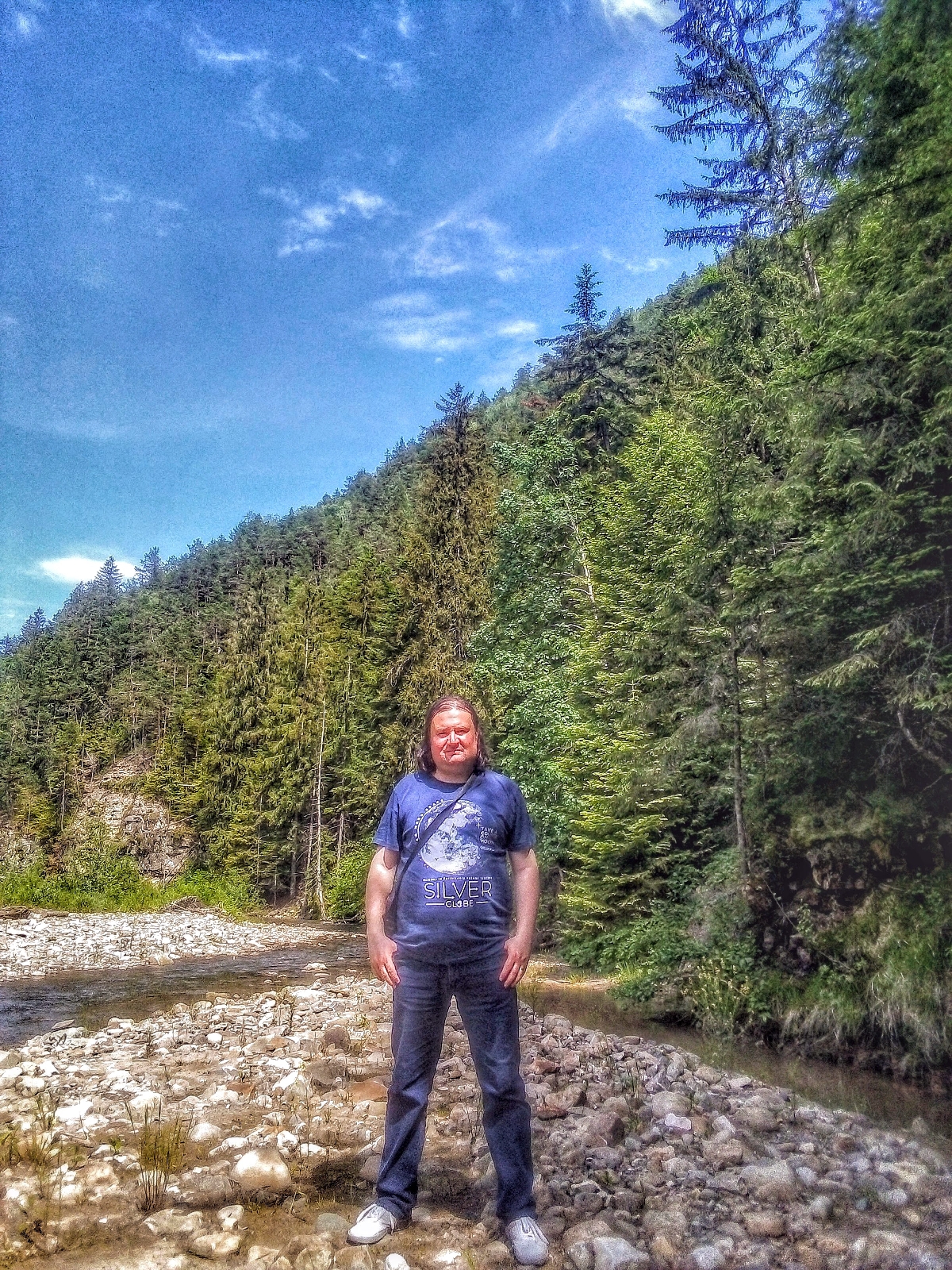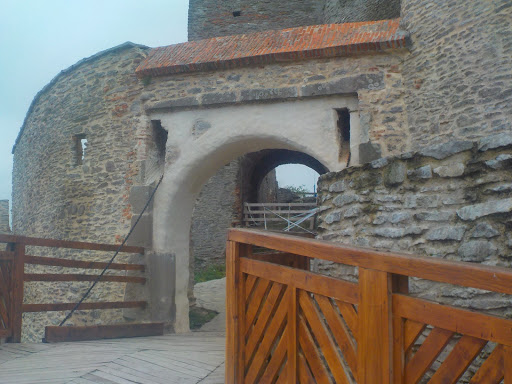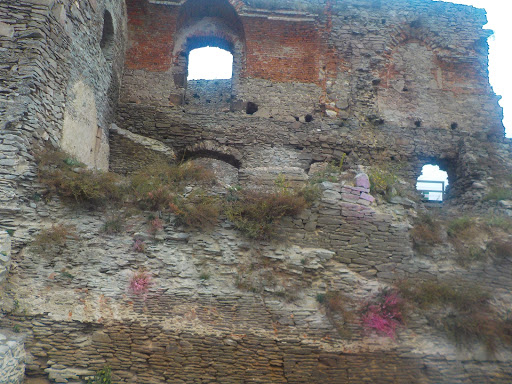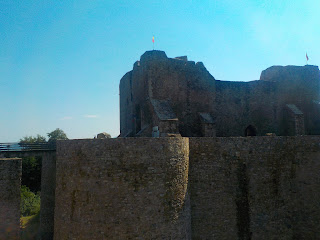I'll use this blog to write about everything that interests me,so I will let you read my articles to find out more about the things I like.Thanks for visiting my blog!
Sunday, April 27, 2025
Fountain from Onești
Sunday, February 23, 2025
The Storm Comes from the East
Sunday, December 1, 2024
Sunday, November 17, 2024
The Silence of Cathedral Square
Sunday, November 10, 2024
Bucegi- The Mountains of Myth and Mystery
Monday, August 17, 2020
The Sphinx in the Bucegi Mountains- a Natural Wonder of Romania
Sometimes I feel the need to detach myself from the immediate reality and let my mind wander throughout centuries. One way in which I try to connect to the past is to look again at pictures of spectacular sites I visited and relive the feelings I experienced when I saw amazing things like wonders of nature or historical buildings or monuments.
For instance, today, after watching a documentary about the Roman conquest of Dacia, my mind flew immediately to an amazing natural rock formation which is one of the symbols of my country: the Sphinx from the Bucegi Mountains.
Two years ago, when I made a journey high in the Bucegi Plateau, this 8-meter high and 12-meter rock impressed me because it resembled perfectly the head of a Dacian warrior. It was hard for me to believe that it was the work of nature and not of the human hand, but that’s the reality. Now, when I look again at the pictures I made with this quiet giant called the Sphinx, I almost expect him to wake up and gather people around him to defend the country from its invaders.
Shaped by the action of nature throughout thousands of years, the Sphinx stands still and proud like a true king of the Carpathians. For some people, it’s just a rock and nothing else, while for others it has a symbolic and mythological value. As for me, I have to say that I consider it a perfect illustration of nature’s capacity to create unique and wonderful things that will last as long as the Earth itself.
Sunday, August 16, 2020
Ancient Citadels- a Bridge Between Present and Past
Whenever I travel to old citadels who were restored thanks to the hard work of people fascinated by history and archeology, or even when I see simple ruins whose origins are often shrouded in a veil of mystery, I experience a strange, but wonderful feeling of living both in the present and the past at the same time.
I can see tourists like me walking in the citadel yards and admiring the vestiges of the past while taking as many memories as they can with their fancy cameras and smartphones, but in the meantime the mind takes me back in time centuries ago, as I try to paint my own mental pictures of how life was then. The more time I spend in an old city or medieval fortress, the more vivid those pictures are in my mind.
Knights all wrapped up in heavy metal armors, merchants negotiating with buyers, people of different social statuses filling the streets of a citadel, some of them so wealthy that they afford to throw some coins to the poor dirty people dressed in rags who can barely earn their living, all these images of a vibrant, but also troublesome past keep my mind occupied while visiting any place of great historical significance.
I think the possibilities are unlimited when it comes to letting our imagination wander back in time and the role of the visual elements represented by those ancient walls, ruins, bridges or bastions in stimulating our creative thinking is highly significant.
That is why I love visiting them so much and I think that examining an ancient building is often a much more cultural experience than being in a busy city avenue surrounded by modern skyscrapers. Any visit to an old place represents an invaluable history lesson for me!
The photos from this post were taken in the following locations: Râșnov Citadel, Făgăraș, Neamț Citadel, Sighișoara, Deva Fortress, Rupea Citadel.
Saturday, August 15, 2020
Do I Live in a Ghost Town?
A few days ago, in an effort to improve and expand my general knowledge, I decided to take a look at a list of cities and towns from my country ordered by population; I was simply curious to see what the rank of my hometown, Onești was on such a list, so I googled it and the first site I opened in order to check it out was World Population Review, which I considered to be a reliable source, but when I opened that list and looked for Onești, I had an unpleasant surprise: it wasn’t anywhere on the list!
Every town in Romania, no matter how small, was present in that table, except for Onești, which may not be a metropolis, but it isn’t a little town either; even with a dramatic decrease in population in the last a couple of decades caused by the bankruptcy or the severe reduction of activity of the factories which were part of a huge industrial platform, once the heart of the town, and the consequent migration of many people to greener pastures, in search for work, Onești still has, at least according to official numbers, a population of almost 40,000 inhabitants, but according to World Population Review, those people simply do not exist!
After such a bewildering find, I couldn’t stop wondering: Do I live in a ghost town? Is Onești a real site or is it an illusion, a deserted place which can’t be found on maps or on Google Earth? Or maybe the guys from World Population Review still aren’t aware of the fact that 30 years ago the town of Onești regained its original name, which had been first mentioned several centuries ago, after being named Gheorghe Gheorghiu-Dej during the communist period? That maybe a possible explanation, but still they have no excuse for this omission.
Fortunately, there are other sources as well, and when I looked for the list of Romanian towns and cities on Wikipedia I had a sigh of relief: my hometown is included on the list, with a population of 39,172 inhabitants which makes it the 49th town in Romania by the population at the moment. It isn’t a desolate place populated by elves, zombies, White Walkers or other mythical or fantastic creatures, but a real town whose inhabitants breath, talk, work and struggle for a decent living, so luckily I don’t live in a ghost town yet!
Anyway, I’m curious to find out if there are any other towns from around the globe which are not included on the list made by World Population Review, because if there isn’t any other one in such a position, that would make Onești a truly unique place in the entire world!
Wednesday, August 12, 2020
Travel Impressions- Deva Fortress
I had admired it from a distance on several occasions and I had placed it on my list of cultural and historical Romanian sites that I would absolutely have to explore one day and in October 2016 I finally got the chance to visit the majestic fortress situated on top of the volcanic hill which lies next to the city of Deva, the capital of the Hunedoara county.
When you see the citadel from below it has an aura of mystery that seems to draw you towards it like a magnet because you know that the stone walls and fortifications which compose the citadel have been the witnesses of a lot of historical events and managed to survive in times of turmoil and fierce battles. If I had the time I would have gladly made the journey to the hilltop, where the citadel lies at at an altitude of 370 meters, on foot, but since I was participating in an organized trip and time was limited, I chose the easy way up, which is by funicular, and there I was, at the gates of the once mighty citadel, in a matter of a minute or so.
Once I stepped within the fortress walls and I found myself inside the main yard I have to say that the sights I experienced were quite close to what I had anticipated: a massive castle with huge stone walls which give an appearance of stability and impregnability. Those walls speak for themselves, they are the best testimony of the impressive strength of this citadel mentioned for the first time in the second half of the 13th century, which has been besieged on many occasions, but never fully conquered and destroyed, throughout the centuries in which it was a military and administrative center of the whole area.
Unfortunately, I had the misfortune of reaching the Deva citadel on a cold, windy Saturday afternoon, so due to the bad weather I had to shorten my visit and do the tour of the citadel at a very alert pace, but still, I could notice the ruined portions of the castle which were caused by an accidental explosion of the ammunition storage belonging to the Austrian forces which are said to take place during the Hungarian revolutionary uprising of 1848-49. That explosion might have represented the nail in the coffin for the citadel, but thankfully it was only partially destroyed, and the restoration works recently made a guarantee that the fortress will be admired by its visitors for many years to come.
Another interesting aspect I noticed in the short time I spend at the citadel was the spectacular view of the city of Deva and the surrounding areas. I could picture myself as a soldier looking down on the valley below and get ready to unleash the firepower on the enemies who dared to venture up on the hill; thankfully, those troubled times are probably gone forever and instead of invading troops the view I could see from the highest points of the citadel was that of a modern, beautiful Romanian city.
At the end of my short, but intense visit at the Deva fortress I had a feeling of satisfaction and accomplishment because I had added another site to my collection of visited Romanian treasures, which is far from complete, and I also said to myself that I would be back to the Deva citadel one day. I was tempted to do it again by climbing up the hill this time(after all it's not that high) but after reading on the Internet that one of the inhabitants of that hill, which is also a natural reserve, is the dreaded horned adder, a venomous snake, I think I will choose the funicular again! Anyway, regardless of the method you choose to reach it, the Deva fortress is a landmark of Transylvanian history which is worth visiting!
Tuesday, August 11, 2020
Săpânța Peri Monastery- an Extremely High Wooden Church
During a recent trip which I took to the beautiful Romanian county of Maramureș I had the opportunity of visiting a truly impressive structure: the Săpânța Peri monastery, which lies in the middle of a dendrological park close to the village of Săpânța, which is famous internationally for its Merry Cemetary. It was built in 1997, using 400 cubic meters of oak trees, and with its impressive height of 78 meters, it is considered by World Record Academy to be the world’s tallest wooden church in the world!
The monastery’s huge tower, which has a 7-meter high cross at the top, can be seen from 5 kilometers away, so it’s easy for anyone to notice it from a distance. Once you get closer to the wooden church you start realizing how tall it actually is, and it’s impossible not to feel impressed by its sheer size.
Moving around this massive spiritual wonder and looking up to the cross on its top was an experience which reminded me how small and insignificant man can be from a physical point of view, but at the same how spiritually rich he can become when he does his best to overcome his limitations and tries to reach for the sky.
It is also showed me that people involved in the designing and building of this giant wooden church managed to overcome all the obstacles they encountered because faith has guided them and provided them with the strength and determination which are necessary to complete such a massive work of art. Thanks to their efforts and dedication, the Săpânța Peri wooden church is included in the UNESCO patrimony and it will stand for a long time as a symbol of the power that faith has to inspire people to do great things!
This article has been originally published on Virily in July 2019
Wednesday, July 26, 2017
Photos from My Visits to Neamt Citadel
Romanian Landmarks: The Neamt Citadel
However, since I could only published one image on EC, I decided to post more snapshots from my two visits to Neamt Citadel here in order to show a more complete picture of this remarkable historical treasure, so here they are:
Dreamer
I still dream of a world of light Where there is no pain, stress or fright And all the people ...






































